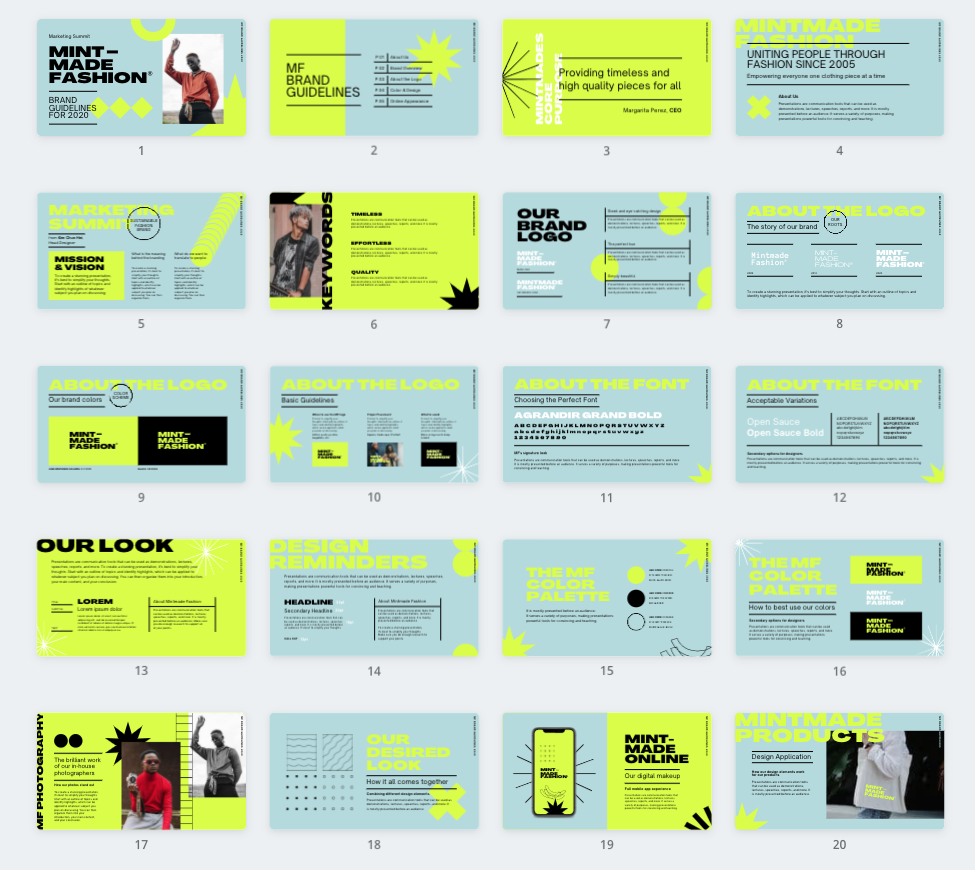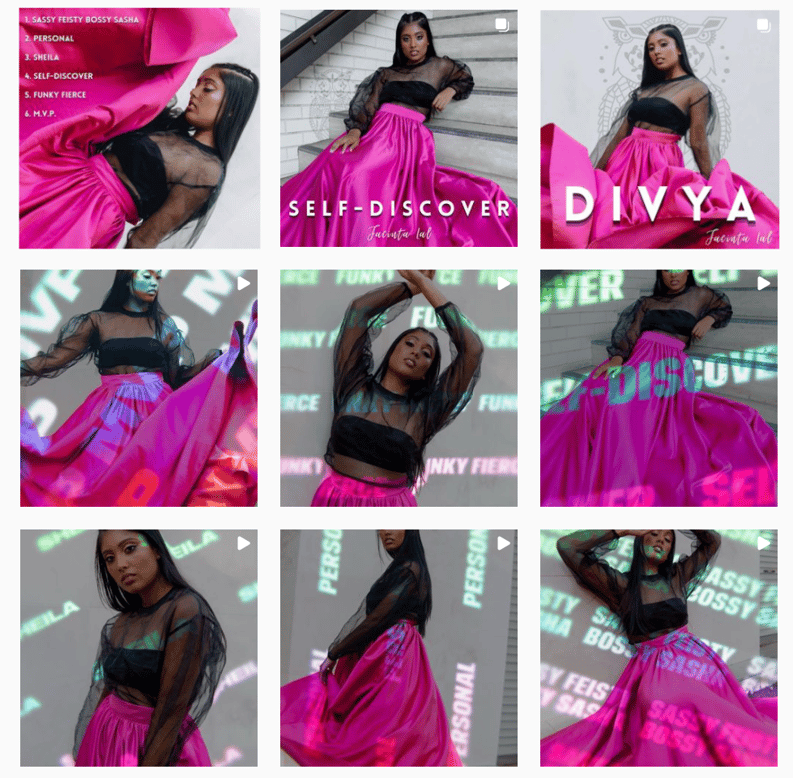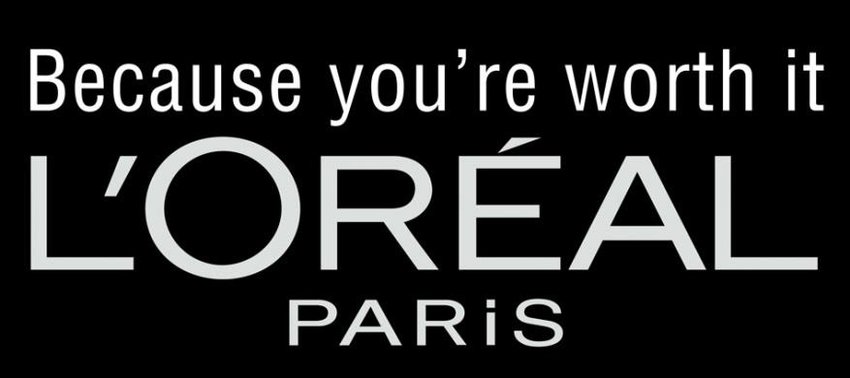If you are a small business owner and are shrugging every time you hear or read the words “brand identity” - then stop right here!
Having a brand identity is not the exclusive prerogative of big, world-famous companies, like Nike, Apple, and Coca-Cola.
In fact, small businesses just like yours should craft a successful brand identity precisely as it will allow them to compete effectively with larger businesses and industry players. I'm talking David and Goliath style!
Whatever business you operate in, and regardless of the budget you have available, building an effective branding strategy should be one of your main priorities. If it isn't there - then add it to the top of your everyday to-do list.
I want to let you into a secret before we go any further...
There is no magic bullet.
The goal of marketing is to connect the value of your business to your customer base. It is a simple concept, but it can take on many different shades.
The good news?
It’s much less complicated (and pricey) than you think. So how do you craft a unique, memorable, and winning brand identity for your small business?
Well, to be frank...I have no clue what will work for you because I don’t know YOUR business and I don’t know YOUR customers.
But luckily, you DO know your business and you DO know your target audience. I hope...
So with that in mind - read on to discover our top five foolproof branding ideas YOU can utilise to up your brand awareness game and potentially unlock the path to future business growth. Watch out Nike!
1. Define Yourself (and YOUR Audience)
OK, it may sound a bit philosophical, but the first step towards the creation of an authentic brand identity is precisely asking yourself pretty metaphysical questions, like “Who am I?”, “What values do I embrace?”, “What is my purpose?”, and “What difference will I bring to my industry?”
Of course, we are not talking about you as an individual (sorry - another time!) but about your business creation – AKA, your company. So, sit down and have a thorough think, because you will want to dig deep into your beliefs, dreams, and challenges.

Do you remember how excited you felt when you were just about to launch your new business? Or when you closed your first sale (we’ll gloss over the fact it was your roommate who bought your product - shipping and all, bless 'em).
Right, you’ve got to channel that passion, that fire, that ambition, and use it to really understand what difference your brand makes to your life, and those around you. Ideally, you will want to come up with at least three adjectives that perfectly encapsulate your brand. Are you “chill, laid-back, and innovative”, or maybe “sassy, bossy, and feisty." You will also want a list of values that you would like your brand to stand and be known for.
If you want to throw in the outline of a plan, then go for it. Think about where you would like to be in the next year, five years, ten years, and consider how you might be able to get there. Once you have done enough self-reflection, it’s time to look outwards and examine two essential aspects that will go on to determine other parts of your brand identity: your industry, and your customer activity.
You’ll want to start by checking out the marketplace you’ll be playing in, to identify your main direct competitors as well as the biggest challenges and opportunities. Of course, you’ll want (and need) to offer a completely original and different brand to your audience, but that’s precisely why you need to watch what your rivals are doing. Can you notice any trends or patterns? Are they particularly active on social media sites? Or do they use video to promote themselves and their products? How about the good, ol' email marketing? Messages in a bottle? Carrier pigeons?
Try to figure out what’s hot and what’s not in your sector right now, as this will help you to steer your brand identity creation efforts in the right direction (we can pretty much guarantee you that messages in a bottle and carrier pigeons are NOT hot).
The last aspect that you want to consider is your potential customers. Now that you know who you are, what you want to communicate, and how you want to do it, you need to establish WHO you want to address.
At this stage, it’s not strictly necessary to develop a super-detailed buyer persona (though please feel free to do so, if you want!). You simply need to ask yourself who might be interested in your products or services and then gradually build on that. How old are your ideal customers, roughly? Are they mostly men or women, or a mix of both? What is their socio-economic background? Keep asking yourself as many questions as you think will help you to better define your target customers, and use your findings to enable your brand identity to develop a connection with consumers.
2. Dare to be Unique with Visuals
The second step towards the creation of your brand identity is to establish and strengthen its visibility, and what better than using powerful, unique visuals to achieve this? This is one of the most creative, yet sometimes also challenging, stages of brand identity creation.
There’s no shame in realising you can’t go it alone, so feel free to reach out to a specialised agency for creative directions.
There are some visual representation elements that your brand will always need, and others that are not always required but can help to reinforce your identity. The essential ones are a brand logo, branding guidelines (or style guide), and a website. Some of the extra ones include social media platforms, videos with relevant content, and business cards with company branding.
But let’s take a closer look at the must-haves.
Your brand logo, first of all. This needs to capture a series of elements that define your brand, and it needs to do so in a way that’s original, persuasive, and recognisable. Wow, that sounds like a lot of work, right? Well, Rome wasn’t built in a day, after all!
You’ll need a logo that nobody else has used before, that communicates what your brand stands for, and that people can memorise easily and recognise whenever they see it. After all, if a picture is worth a thousand words, we could say that a logo is worth a thousand blog posts, or something like that...
We might be exaggerating, but you get the gist. Coming up with a logo that ticks all the right boxes can be challenging, but once you have nailed that you will realise how all the other visual assets will flow out pretty naturally with brilliant branding.
In fact, you will use your logo for pretty much EVERYTHING visual: starting with your brand manual. This is a super-duper-important document that captures the entire essence of your brand, using both words and images. A brand manual will feature elements such as your brand character fonts and your colour scheme of choice, as well as more specific design rules on how your brand should (and shouldn’t – remember the don’ts, too!) be represented publicly.

Last but not least, the third fundamental element of your visual brand identity is your website. This should act as the window of a shop: put only your best items on display and entice your audience to come in to discover more about you. Your website should be informative, convincing, and interesting, and it should also match the design style and rules that you have established in your brand manual, while always prominently featuring your logo.
3. Craft Awesome and Compelling Content
Bill Gates titled his 1996 essay Content is King, which included the following - and truly visionary - statement: “Content is where I expect much of the real money will be made on the Internet, just as it was in broadcasting.”
Since then, the expression has gained enormous popularity, especially in the world of digital marketing, and it continues to describe a very well-known fact: content marketing is the key to success. So, as a small business owner, what exactly can you do to create amazing content that is effective and doesn’t break the bank? Well, lucky for you there are several ways in which you can achieve this.
The first thing you should do is carry out some online research into what exactly your customers might be asking and looking for when they go online. OK, we hear you say, but what about the format? How much should you write, and where should you post the final content? One of the most advantageous features of content marketing is its incredible versatility. Meaning: what you are now writing as a blog post can easily, quickly, and affordably be repurposed for social media posts, a landing page, a video caption, and infographics.
Simply adjust the length, the tone of voice, and cut down anything that won’t fit with the specific channel that you are posting to and hey presto! You're good to go!
By doing this regularly, you will quickly establish yourself as an expert in your specific field. Content marketing is super-useful to reinforce your brand’s visibility, credibility, and reputation, and it also helps you to find and develop your unique brand voice. All these, in turn, are fundamental features of a successful brand identity.
4. Offer Your Customers Something Invaluable
For your brand to be as unique as you want it to, it needs to promote that quintessential quality that makes consumers go “Wow, I need this product in my life, right now!”.
In marketing terms, what you need to establish at this stage is the so-called “point of difference”, or POD. Think about this: however great and potentially innovative your products are, there is a very strong chance that you are not the only company in your industry that offers them. Sorry, we hope we didn’t hurt your feelings!
Is it, maybe, the fact that you are committed to only using organic and ethically sourced ingredients? Or that you keep your prices very low without ever sacrificing quality? Or, perhaps, you are putting a lot of thought and effort into helping your customers create a bespoke skincare routine? Is a particular Instagram influencer crrrazy about your products?
Whatever you think your POD is, once you have identified it you need to hold on to it and use it as a basis for your market strategy. A POD is so powerful, that you might even want to incorporate it into your brand name, like a slogan or tagline.
If you need some inspiration, then why not look at what some of the most popular and successful brands have done (and continue to do) to highlight their special point of difference?
Take, for example, L'Oreal and their famous tagline
Simple, impactful, authentic. If you want to select a beauty or skincare product that truly values you and makes you feel beautiful and confident, then L’Oreal is the way to go. Urban Decay, on the other hand, chose the tagline “Beauty with an edge”, immediately addressing those consumers who want something bolder and “extra” from their makeup routine.
You can find many more examples, within the beauty industry and elsewhere, but you get the gist.
But offering something unique is still not enough for your brand to really cut the mustard in such a fiercely competitive marketplace. Brand reputation is a vital aspect to consider when building and developing a brand, and it is highly dependent on how your customers view you, and how they talk about you among themselves and publicly. Rule of thumb: You want to take the best possible care of your loyal customers, both online and offline. Happy customers will only add to your marketing efforts and your chance of success.
Always providing a positive, engaging, smooth customer experience across all the touchpoints of the customer journey is essential. You might need to get a bit smart with this such as:
- Incorporate artificial intelligence and affordable tools such as friendly chatbots.
- Ensure that your website is fully optimised for mobile.
- Make sure the online checkout process is quick, easy, and secure.
Remember: the relationship with your ideal customer doesn’t end when you finally close a sale. In fact, that’s the beginning of something even better and greater (and potentially more profitable): customer loyalty and retention.
So, look after your logistics processes in the most efficient way, making sure that shipping, deliveries, and returns are as hassle-free, affordable, and sustainable as possible. Then, always ask for customer feedback. Ask how you did, and whether they enjoyed their new product.
Would they recommend it to friends and family? What do they particularly like about it? Is it making their lives better or easier? Are they sleeping better at night? Engage with them through email marketing, surveys, and feedback requests, and throw in some exciting special deals that will entice them to keep buying from you.
5. Expand Your Network with New Opportunities and Partnerships
Another essential aspect that can help you strengthen your business brand identity is networks and partnerships. Influencer marketing, for example, is a super-effective way to promote yourself in an easy, cost-effective way. Check out micro-influencers, who are more accessible (and affordable) than bigger celebs, while also boasting much higher engagement rates.
You can team up with other companies, too - as long as they’re not direct competitors, of course. To use our beauty and skincare example again, let’s say that you are launching a new face wash. Why not get in touch with local hotels or spas, for example, to find out whether they would be interested in stocking your products and helping you to promote them through their websites and social channels? This way, you will be able to open up possible new revenue streams without harming your business by getting involved with competitors.

The options to build fruitful partnerships with both individuals and companies are limitless, and they can truly add immense value to your brand identity, awareness, and credibility.
Ready to Craft Your Unique, Winning Brand Identity
All businesses, including (read: especially!) smaller ones, benefit from building a persuasive, original, and consistent brand identity. Small business owners can achieve their perfect brand identity by applying these easy and affordable five steps.
From understanding what your brand is and what it stands for to identifying your target market and all the way to crafting amazing content and partnering with other prominent brands, the opportunities offered by a brand identity program are endless. At Neighbourhood, we love small business branding - so if you’re curious to hear more about what we’ve just talked about, just reach out by clicking the link below.


